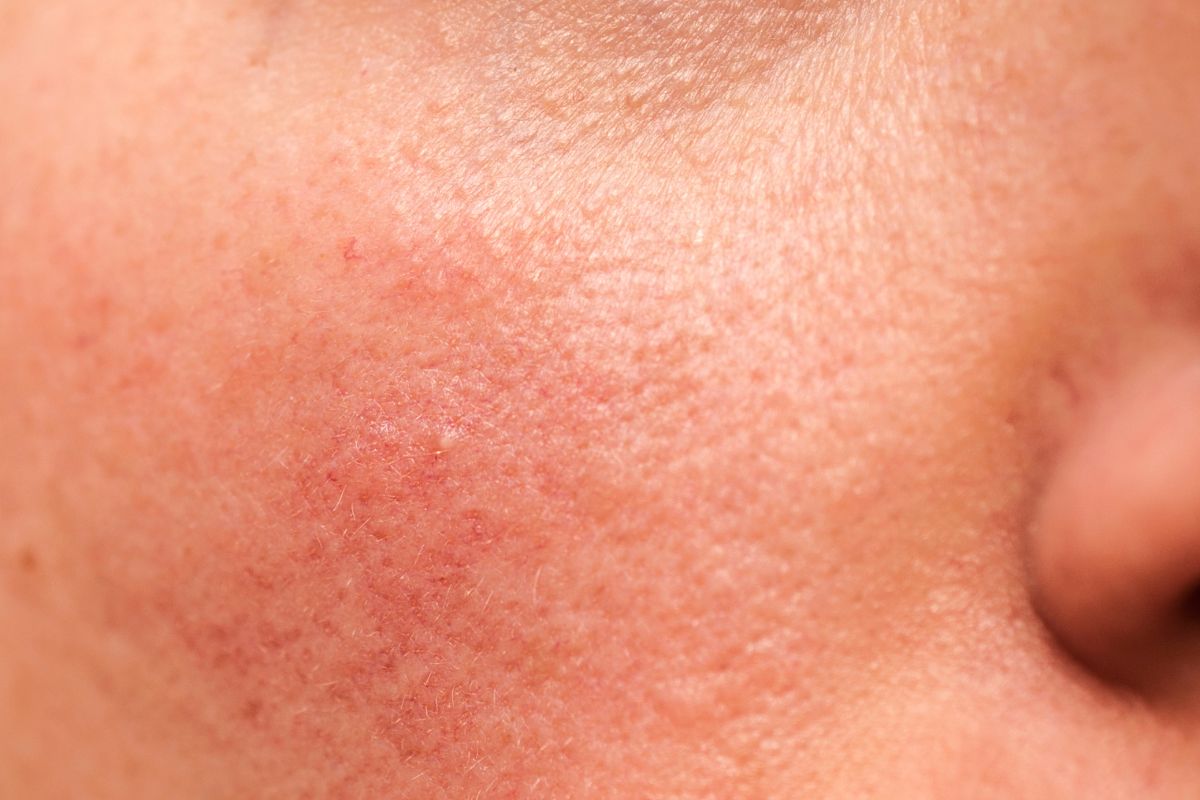What is Rosacea?
Rosacea is a chronic inflammatory condition that mostly affects the central part of the face and eyes. It typically shows remissions and exacerbations over time that cause redness, blemishes, and dilated blood vessels on the face. It can affect one’s professional, social, and family life.
Rosacea is common in both men and women and affects up to 10% of the population. It affects all skin types but is often more difficult to diagnose in skin of color. It can start at any age, although it usually begins after the age of 30.
The cause of rosacea is not completely understood. Genetics and environmental factors play a role. There is evidence for neurovascular and immune dysregulation as well as microorganisms such as demodex mites and staph bacteria.
There are several types of rosacea, and some people may suffer from one or more types. It often presents as transient or persistent redness, dilated blood vessels, swelling, and inflammatory lesions. There may also be burning, stinging, dryness, or itching of the skin. Some patients have eye symptoms including inflammation of the eyelids, cornea, or whites of the eyes.
Rosacea is a life-long disease that can be very troublesome for patients. Inflammatory acne-like lesions may improve, but redness tends to be persistent. There are several treatments available that can help manage symptoms.
Multiple factors contribute to the development of rosacea. Exposure to the sun is a well-known trigger. Alcohol, spicy food, hot beverages, high temperature, certain foods, cosmetics, and stress can also cause worsening of symptoms.
Some skincare practices may also exacerbate rosacea. It is important to use gentle cleansers and moisturizers and to avoid irritants and excessive friction caused by scrubs, exfoliants or washcloths.
Rosacea can be treated with both prescription topical and oral medication. These medications are most beneficial for patients with inflammatory acne like lesions called papulopustular rosacea. Topical medications include ivermectin, metronidazole and azelaic acid. Oral medication includes doxycycline, beta blockers, and hydroxychloroquine.
Intense Pulse Light (IPL) can be beneficial for treating both facial redness and dilated blood vessels. These are often resistant to treatment with oral or topical medication. Generally, 1-4 treatment sessions are required with single maintenance treatments every 6-12 months depending on rosacea severity.
Wrinkle relaxers (Botox®, Nuceiva™, Dysport®) are an effective treatment for redness and flushing caused by rosacea. Flushing often occurs as episodic a`acks of redness of the skin with a sensation of warmth or burning of the face, neck, and upper chest. Injection of wrinkle relaxers into the skin has been shown to result in considerable improvement in these symptoms and results last up to 4 months.
Specialty skin care products are specifically designed to help maintain a healthy skin barrier. A healthy skin barrier is essential because many patients with rosacea suffer from sensitive skin. Specialty skin care products can also contain ac1ve ingredients that soothe the skin and reduce rosacea flare ups. Washing with lukewarm water helps to prevent rapid temperature changes in the skin which induces flushing. The skin should be thoroughly rinsed after cleansing to avoid irritation from cleansers and the skin should be gently patted dry with a soft towel. Mineral sunscreens do not absorb UV light and so do not release heat when exposed to the sun. This helps reduce flushing that is often triggered by heat.
Supplements such as omega-3 can help to reduce inflammation and prevent dilated blood vessels.




